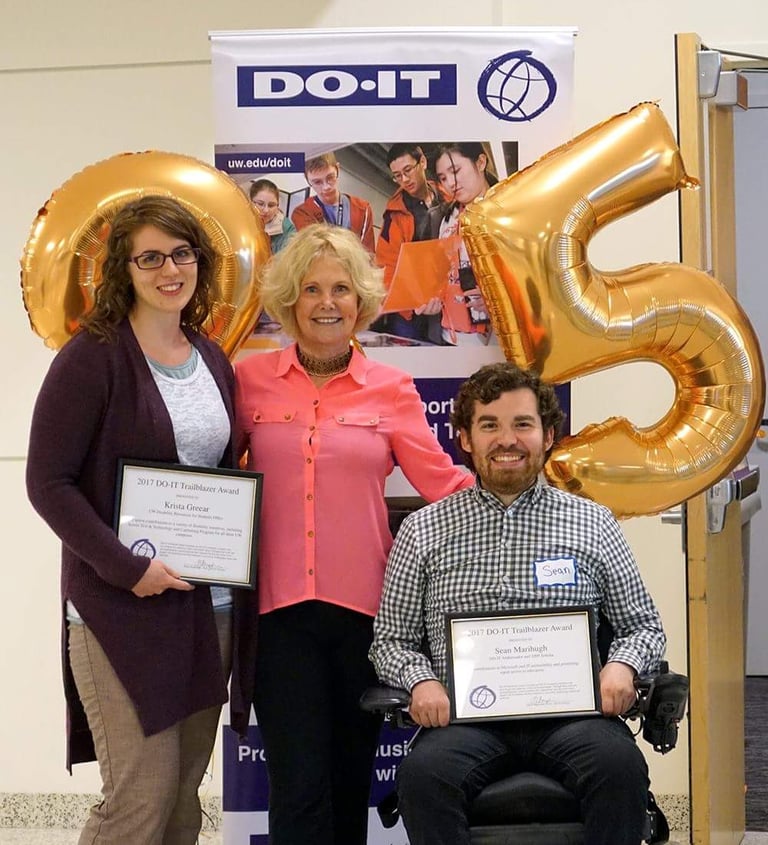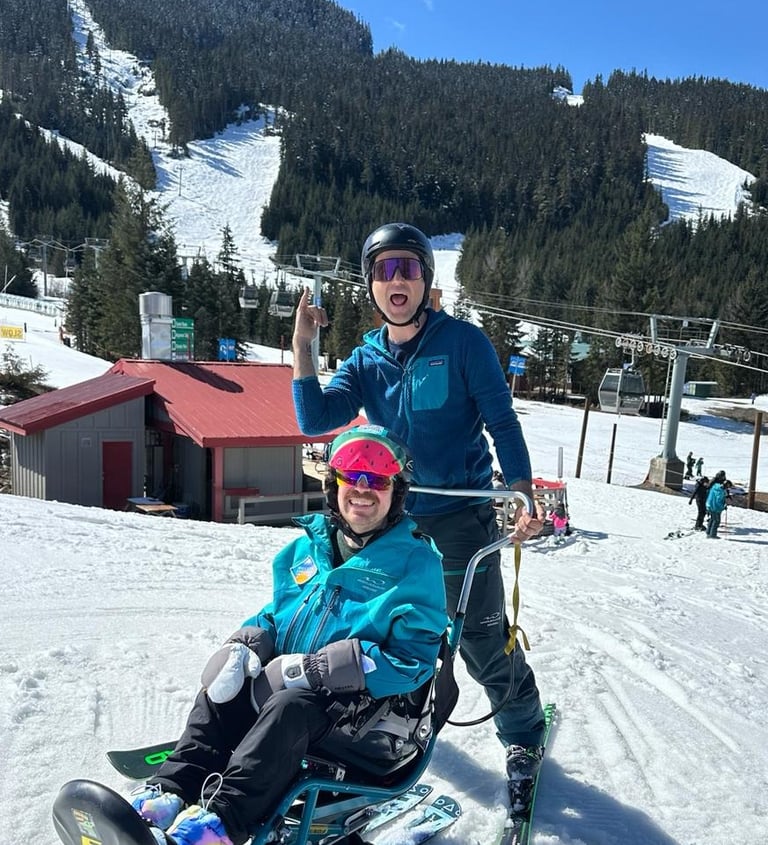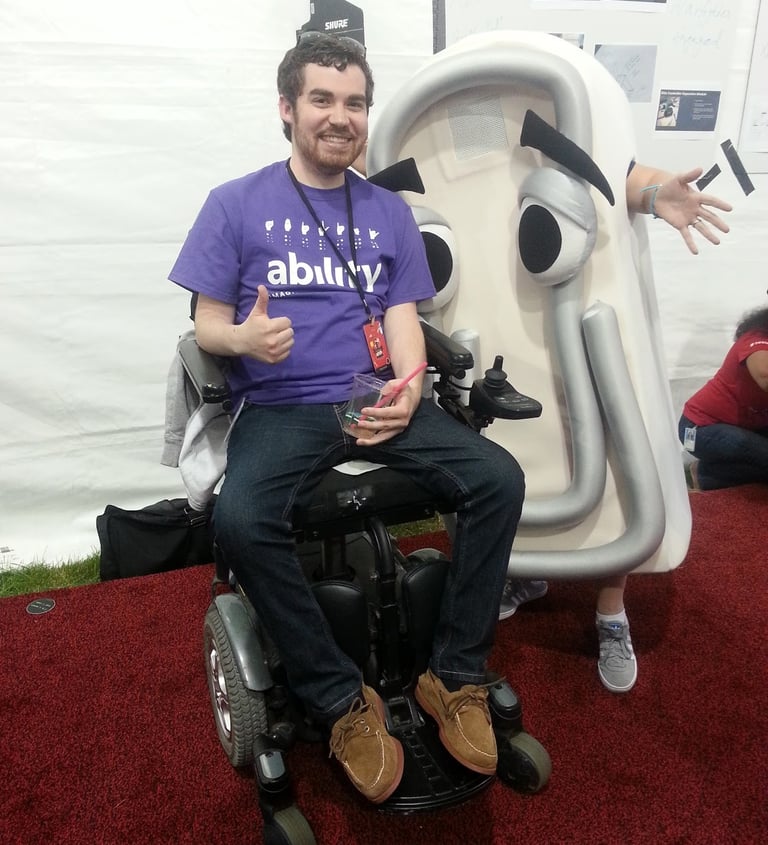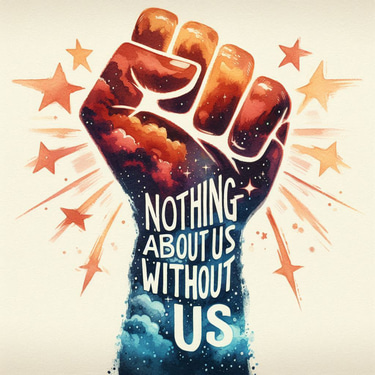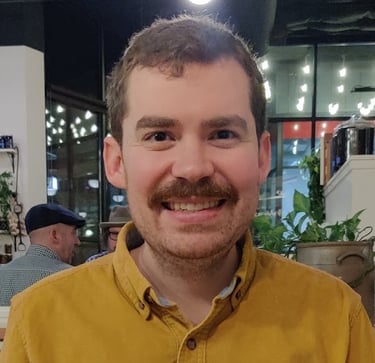My story so far.
Technology is a powerful tool for breaking down accessibility barriers, but it's not the only one. Accessibility is digital, but it's also in the attitudes of our communities, the content that shows people with disabilities living a fulfilled life, and access to opportunities to show what's possible when we creatively and intentionally find ways to include the disability community - athletes, leaders, technologists, entrepreneurs, and everything in between. Read on to see what drives me in this work.
Note: it turns out I love writing, so feel free to take breaks if you need to!
14 years
Working in digital accessibility
Lifelong
Love of the outdoors and adaptive sports

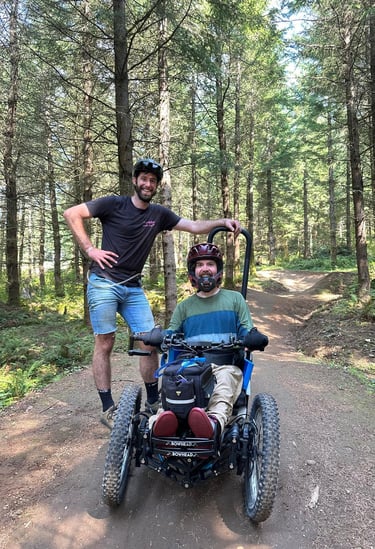
About me.
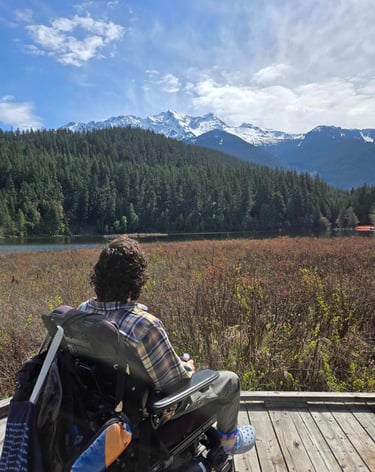

From a young age, I've been fascinated with both technology and the outdoors. Technology felt limitless in its potential and I always wanted to understand what makes things work - I have an early memory of trying to disassemble a Buzz Lightyear action figure from a Happy Meal to see if I could make the wings on his suit come out (spoiler: they didn't).
My parents have been avid water skiers for much of their lives, and I grew up for several years on a lake outside Spokane, Washington, and was probably holding the flag whenever someone was in the water well before I could walk. I also started snow skiing around age 3, regularly skiing with my family until I was around 10 years old.
I have Becker Muscular Dystrophy, a degenerative neuromuscular disease that affects my body and muscles over time. Skiing was where I'd notice it most - it got increasingly difficult and tiring the older I got. At the time, I thought I had skied for the last time, and felt quite powerless knowing I couldn't change that.
Not long after, my brother started volunteering with a local adaptive ski program then called Ski for All. I suppose this was a nudge from my parents for me to explore it. Struggling with my identity, I simultaneously had thoughts that I wasn’t disabled “enough” to fit into a program for people with disabilities and was “too” disabled to be an athlete. I remember having feelings of internalized guilt – that I wasn’t really disabled, was I? I could still walk and do a lot of things when I was younger.
Could I really do sports and be active? I resisted for many years the pull to be back in the mountains, stuck with the idea that it was no longer for me, and not knowing anybody “like me” with a similar type of Muscular Dystrophy who had tried it.
Later in high school, I was connected with the DO-IT Program out of the University of Washington focused on helping high school- and college-age students with disabilities prepare for transitions to college and career. This was transformative for me, both in the opportunity to connect with people with many different lived experiences with disability, and to learn to accept that disability is a normal part of the human experience.
This program also exposed me to the myriad ways people with disabilities use and interact with technology. One of the projects I did was learn how to build an accessible website and all the considerations that go into engaging and quality digital experiences - not simply meeting the minimum bar for accessibility standards, but how accessibility can and should be a first-class experience just as we strive for with the nondisabled community.
Simply put, accessibility and disability are creativity.
My career.
The DO-IT Program was such an important foundation for my career - each summer, we'd visit the Microsoft campus in Redmond, Washington to meet and hear from employees with disabilities. Having some family members that had worked at Microsoft over the years, it was always my first choice any time we had to do a job shadow in high school.
This cemented my interest in working at Microsoft, and through those visits, I'd developed a small network of people interested in and working on accessibility. But it wasn't the first step in my journey. I briefly worked at the Federal Aviation Administration as an Equal Employment Opportunity Specialist, helping coordinate workplace mediations and audits, and getting to work on some disability hiring initiatives. While at the FAA, I learned about an opportunity at Microsoft . I leveraged my (small, yet mighty) network for interview prep and some of them put in a good word.
When I joined Microsoft to support the Disability Answer Desk, a free technical support service for customers with disabilities, I got to channel my interest in assistive technology to support the frontline support technicians, building training and occasionally working directly with customers with disabilities to get feedback to share with product teams. I only got yelled at a handful of times from an angry customer, but mostly I found people to be grateful for the support.
I later got to work closely with enterprise customers through the enterprise Disability Answer Desk, including banks and governments, which luckily involved (much) less yelling. But it was a great opportunity to better understand the complexities of large organizations and appreciate their work to reduce barriers for their employees and customers. It helped me build a large network across Microsoft and many of its large customers.
Along the journey, Microsoft provided some incredible career opportunities and highlights, with the flexibility to work on projects all across accessibility. I advised on early prototypes for the Xbox Adaptive Controller, a device recognized by TIME as one of 2018's best inventions that changed the trajectory and visibility of accessible gaming. I even gave design feedback on the controller's packaging, and some of the best practices have been carried over to other products, even those not specifically focused on accessibility. A definitive career highlight, I planned and filmed a video to showcase the packaging and play Xbox with Microsoft CEO Satya Nadella.
Most recently, I've worked closely with companies that make some of the most well-known assistive technologies in the industry through the Microsoft Assistive Technology Partner Program. Assistive technology is complex, and through this role I have been able to develop and deepen partnerships with these companies, helping support their success, in turn improving the ways assistive tech enables people with disabilities to have fulfilling careers and access the world of information around them. Some of these projects were highlighted in Microsoft's 2024 Ability Summit's session Build an ecosystem to drive accessible technology.
The focus of much of my work has shifted to AI - finding new and innovative ways for the assistive tech industry to leverage AI to evolve how people interact with tech. Some examples are in another Ability Summit session, Bridging the Disability Divide with AI Tools, other projects are around using AI to recreate voices for people with diseases like ALS.
I'm proud that I've genuinely enjoyed the purpose, impact, and creativity that my career has offered me thus far. The range of experiences have empowered me with the skills needed to add value on many projects across the accessibility space, bringing both my own lived experience and my passion for learning from the many mentors and leaders with disabilities I've met. Organizations large and small are understanding more and more the ability they have to break down barriers, and that it has to be done hand-in-hand with the disability community.
The biggest lesson I've learned in my career is that everything we do touches accessibility, and it's never too early to start the conversation.
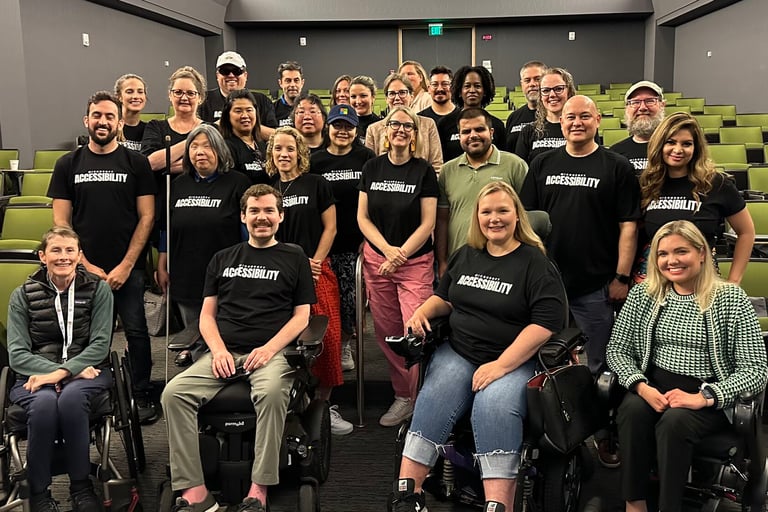

Finding the outdoors (again).


The creativity that my career and connections with the disability community have shown me, along with important people in my life, gave me the spark to rediscover the outdoors. I quickly learned how important the outdoors are to me and felt a certain push to make up for lost time for the years I resisted the pull of adventure.
I finally gave adaptive skiing a try, all the while thinking I wouldn't like it. Yes, I was cold, and didn’t quite have the right gear that first week to stay warm enough, but I was hooked quickly by sliding on snow. Having used a power wheelchair for many years, I’ve learned the terrain it works on, and more importantly where I’m not able to go. Snow was one of those no-go things for me; my chair would quickly get stuck.
To be clear, my wheelchair is a tool that gives me freedom and independence; phrases like “wheelchair bound” or this idea that people with mobility devices want nothing more than to get out of them always grated on me. It was hard for me to walk more than a few steps without getting tired; my wheelchair opened the world to me. It allowed me to live independently, travel, and cover a lot of distance quickly that I was no longer able to do otherwise. But the sit ski was next level! I could go fast and use my body to control my path down the hill.
Sit skiing showed me again the exhilaration of being outside, and it's become the thing that I crave year-round, always occupying some part of my brain. I've developed some incredible friendships and ski partners and had so many experiences that years ago I never would have expected to have. It felt so powerful to feel like an athlete again, that I can access the outdoors and develop my skills and ability.
Learning to ski (again) around the Seattle area at Snoqualmie Pass and Stevens Pass with Outdoors for All, I soon began to spend as much time as I could in Whistler, British Columbia, and my development as an athlete took off with the support of the world-class Whistler Adaptive Sports Program and their partnership with Whistler Blackcomb. The joy of experiencing the mountains and the competency of their adaptive ski instructors make it easy for anyone to fall in love with the mountains and find ways to help any athlete discover their potential.
Continuing the mindset "nothing about us without us", it became a goal of mine to not only be an athlete, but an instructor too. Starting out, I didn't see people "like me" as leaders or instructors; I imagine seeing that would have helped me discover the sport and see the potential pathways open to me would have encouraged me to try it sooner. If I had an instructor with similar lived experiences was teaching me, it would have been easier to connect with the sport and know what to expect, something that admittedly is difficult without disabled mentors.
I joined an Adaptive Level 1 training hosted by Whistler Adaptive, and having “nerded out” over the curriculum for months prior, I surprised myself with how I could explain a lot of the methodology. But importantly, the course conductor essentially had me teach some of the modules and allowed me to share my experiences. This helped me understand the value I can bring, and it's a path I am so excited to continue down, with so much opportunity to bring others to the sport and see what is possible.
I'm now on a journey to find all the new adventure sports and activities that are re-opened to me with this mindset shift. From adaptive mountain biking (still scary), adaptive kayaking, adaptive sailing (I'm still not sure what "tacking" means), and so many other sports, people with disabilities and with muscular dystrophy can and should have agency to try new experiences.
My new mantra is that everyone is an athlete and can enjoy the outdoors, it just takes creativity and passion!
What this means for you.
Disability and accessibility touch so much of the world around us, and organizations large and small are understanding the role they can play in empowering people with disabilities to live fulfilling lives and access the world and information in new ways.
Wherever you are on your disability inclusion journey, there are always ways to improve, to evolve, and to better integrate lived experiences of people with disabilities. I'm excited to bring my creativity and passion to projects that are meaningful to you, to help you better unlock your potential and reach the disability community.
Whether it's in adaptive sports and the adventure tourism industry, digital or organizational accessibility, or telling authentic stories and challenging the world to raise the bar, I'm eager to support.
